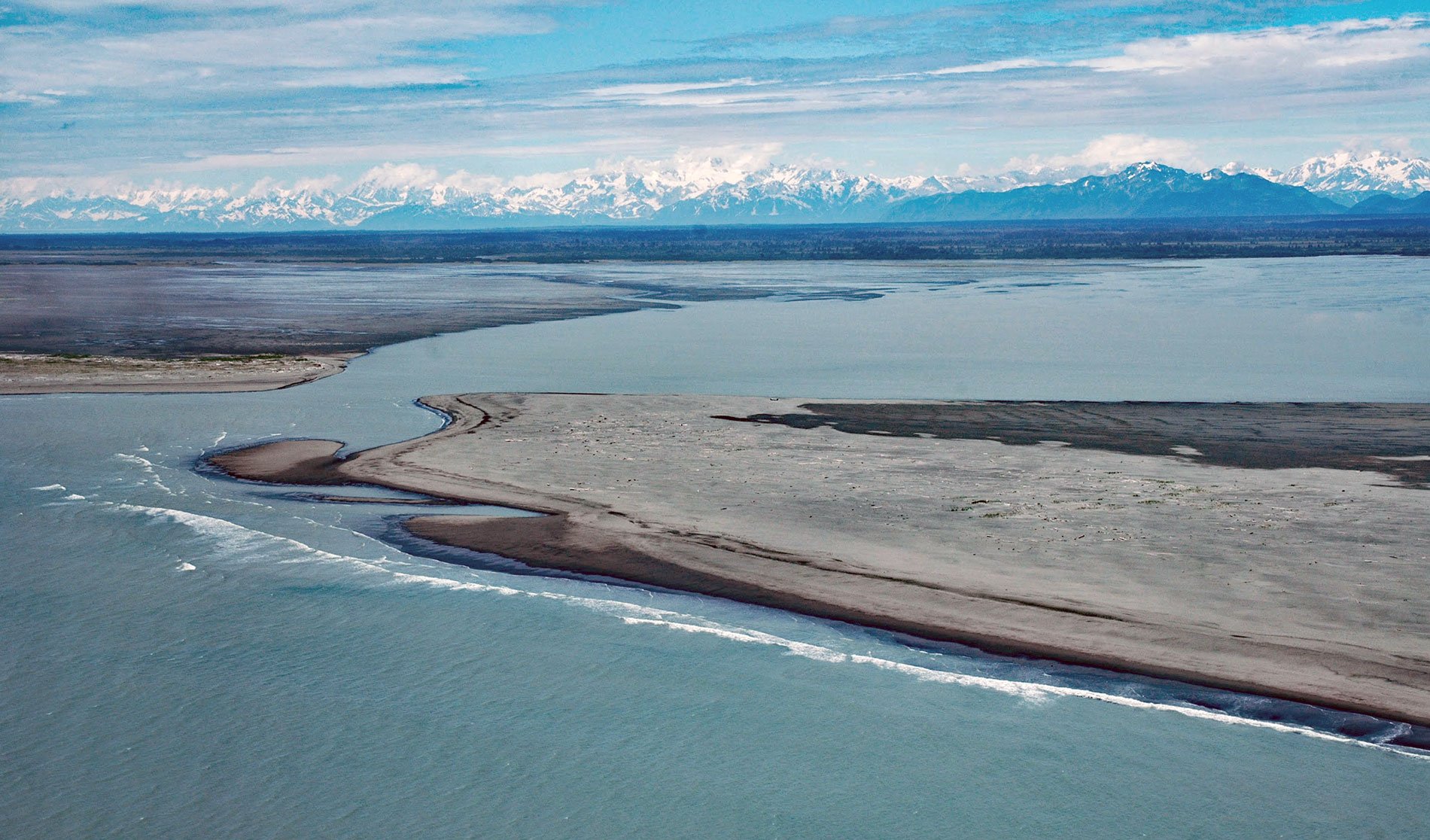Dangerous River starts at Harlequin Lake and flows southwest for 16 miles (26 km) to the Gulf of Alaska, about 102 miles (165 km) northwest of Gustavus and 50 miles (81 km) southeast of Yakutat, Alaska. The name was first reported in 1901 by Lieutenant Commander Moser who was the captain of the U.S. Bureau of Fisheries steamer Albatross, a San Francisco-based research vessel with a U.S. Navy crew.
The Dangerous River connects the Yakutat Glacier in the Brabazon Mountains to the Gulf of Alaska. The mountains were named for A.J. Brabazon of the Canadian International Boundary Commission who made the first photographic survey of the Yakutat Bay region in 1895 and with the help of those pictures, compiled the first topographic map of this area.
The Yakutat Glacier is the primary outlet for the 310 square miles (810 sq km) Yakutat Ice Field and drains into Harlequin Lake. The Yakutat Glacier is one of the fastest retreating glaciers in the world. Over the past 26 years, the glacier’s terminus has retreated more than 3 miles (5 km). Harlequin Lake is accessible via a scenic 29 miles (46 km) primitive road from the community of Yakutat. The Dangerous River flows out of Harlequin Lake and is heavily ladened with glacial silt. At the coast, the river water flows over the top of seawater, and meets the clear water from the Italio River, forming a distinct boundary. This phenomenon is due to the slow mixing of waters with different temperatures, salinities, and sediment volumes. Learn more here and here. Explore more of the Dangerous River here:

